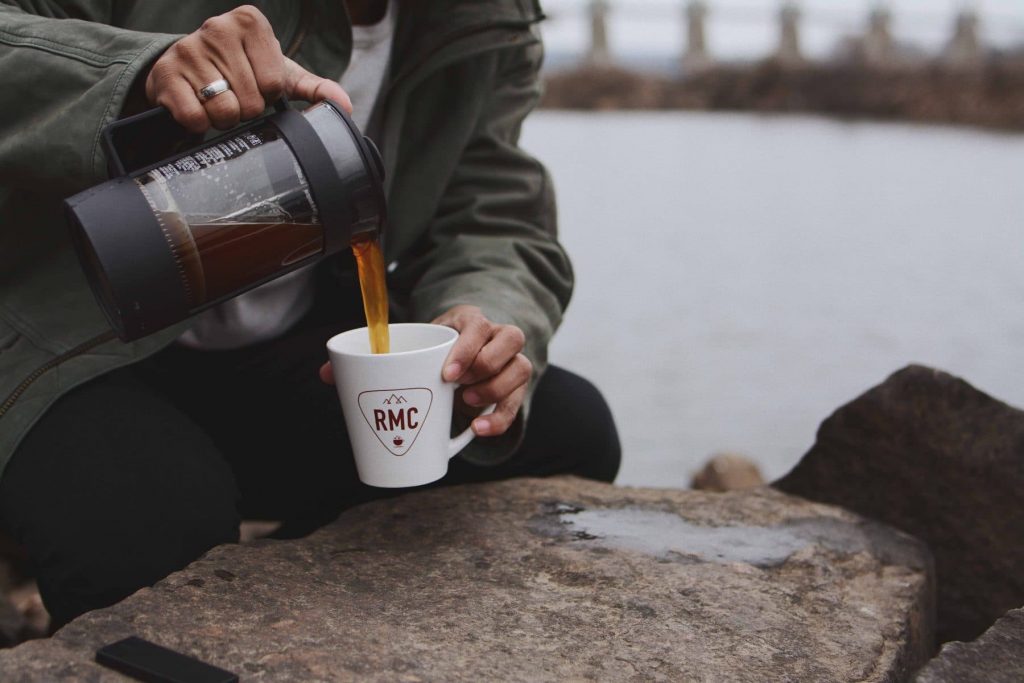Originally published: at Round Mountain Coffee
When it comes to brewing coffee at home, most are familiar with the traditional french press brew method. The real question I want to pose to you is how much do you truly know about this family favorite? Starting from origin to process to final product, this post serves to inspire you to give the French press a try in your own home!
Brief History
The French press was originally patented by two Italians, Attilio Calimani and Giulio Moneta in 1929. Shortly after in 1958, a Swiss man by the name of Faliero Bondanini mass produced a model that is widely used in coffee shops and households today. Bondanini manufactured it out of an old French clarinet warehouse and gave it the name Chambord.
The initial popularity of the final product in France gave it the name we know today; the French Press! With this brief background now, would you consider this a French, Swiss or Italian product? Leave us a comment below with your ideas!
Consistency of a French Press
The French press is a full immersion brewing process with a mesh filter that allows the natural oils to come out through the coffee. This process is similar to steeping tea or brewing a cup of coffee using an Aeropress.
The oils are what gives the French press its mouthfeel and full bodied flavor, which typically results in a bolder cup of coffee versus other methods.
Materials
- French Press
- A grinder (if you’ve never purchased one before, look for a burr grinder!)
- A scale (optional if you want to get the best consistency and flavor from your coffee)
- Whole coffee beans (the fresher the better, so be sure to buy locally)
- Water
Brew Process
- The Grinding Process
- Because the French press is a full immersion coffee brewer, it is important to grind the coffee so the final product particle size is similar to that of course sea salt. Most modern in-home burr grinders will have a ‘French Press’ setting, be sure to use this! If it is not explicitly labeled, use the more coarse grind option available.
- The Ratio
- Coffee ratios are key to brewing the best cup of coffee at home. This is where the importance of using a scale comes into play. Here at Round Mountain Coffee, we use a 1:15 bean to water ratio.
- Example: If we use 24 grams of coffee we will pour 360 grams of water into the press.
- There is no correct or ‘best’ ratio! Feel free to experiment with other ratios. A helpful tip is if the coffee is tasting too bitter in the end, increase the ratio (1:17 ratio) and likewise if it is not strong enough, lower it (1:13 ratio).
- Water Temperature and Brew Time
- For best results, it is important to get the water to an optimal temperature between 195 and 205 degrees Fahrenheit (to achieve this temperature without a thermometer, after your water comes to a boil, leave it sitting for approximately 30-60 seconds to reach this temperature. Using this temperature range allows the solubility of the coffee to extract at an appropriate time. Water that is too hot can over-extract your coffee and leave it too bitter while water that is too cold can leave you with watered-down coffee.
- If your temperature is within this range and the grind setting is correct, the brew time should be around 4 minutes from the moment water contacts the dry coffee.
- Times can vary depending on the particle size of the beans and temperature of the water.
Example Brew Process
So much information! What to do with it? Follow these instructions below to get an optimal cup of coffee in your own home! (this example is using a 1 to 15 ratio)
- Heat your water to 195 to 205 degrees Fahrenheit
- While the water is heating, grind 24 grams of coffee on a course setting
- Preheat the French press with the hot water (you don’t want to pour hot coffee into a cold container)
- Dump water out from the press that you used to preheat the container
- Add your ground coffee into the empty french press
- Start your timer and pour 60 to 70 grams of water in a circular motion to fully saturate the coffee
- Allow the coffee to de-gas (give the grounds a chance to soak in the water) for 30 seconds
- Pour the remaining 300 grams of water into the press
- Place plunger on top (don’t press yet!)
- At the 4 minute mark, gently press the plunger down to the bottom
- Serve and Enjoy!
Pro RMC Tips
There’s so much more than goes into making an awesome cup of coffee from a French press. Here are few more tips for you!
- Give the slurry (slang for the coffee/water mixture in the press) a stir after you finish pouring the water. Stirring allows the coffee to not settle as quickly which yields a more even and flavorful extraction.
- If the coffee is too heavy due to the type and roast of coffee, use two spoons to scrape the top layer of oils off the slurry before pouring. This allows for a less heavy coffee mouthfeel.
- Decant all of the coffee into a different device after done brewing so the coffee does not continue steeping.
Guest article posts


